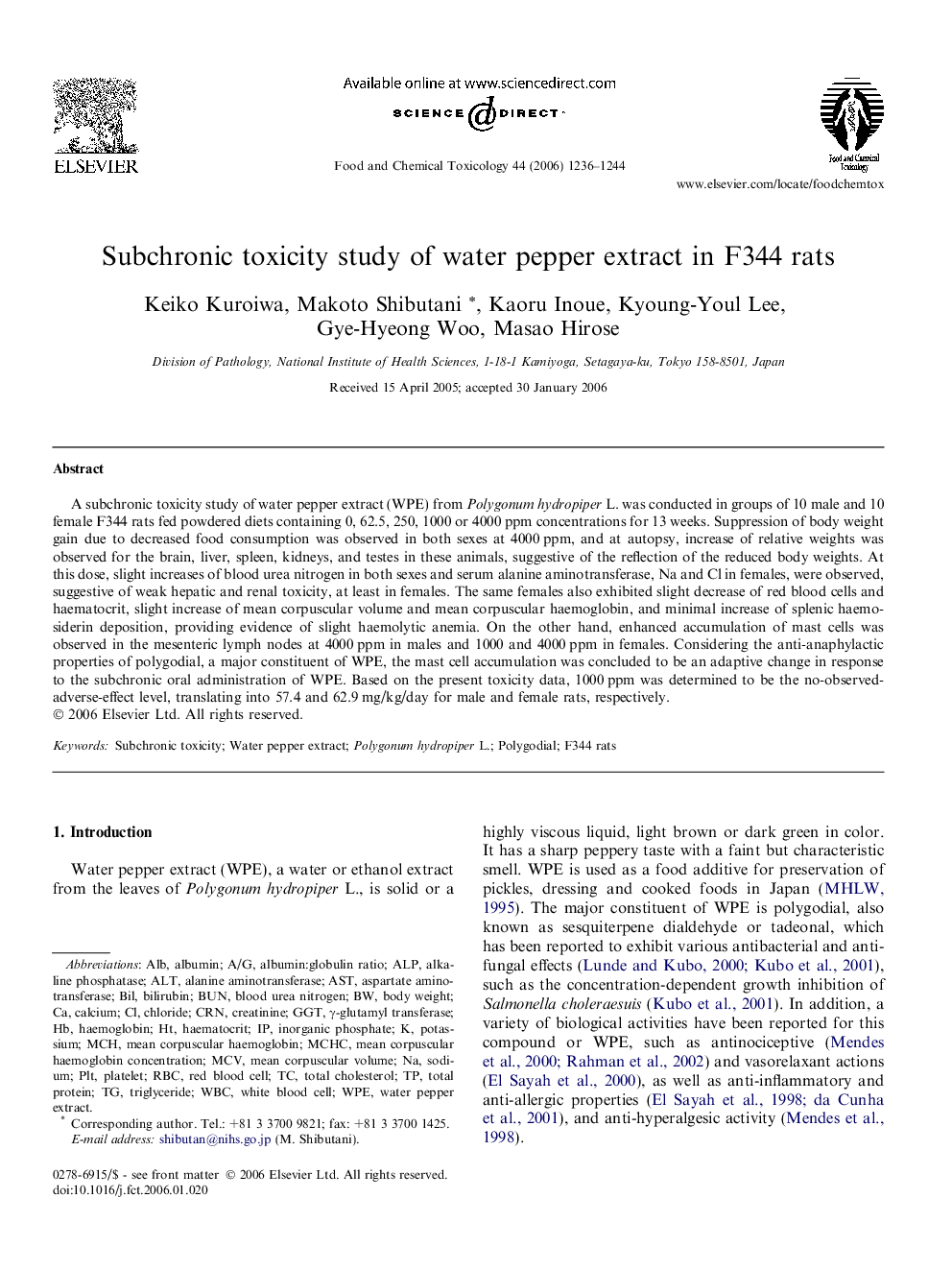| Article ID | Journal | Published Year | Pages | File Type |
|---|---|---|---|---|
| 2587045 | Food and Chemical Toxicology | 2006 | 9 Pages |
A subchronic toxicity study of water pepper extract (WPE) from Polygonum hydropiper L. was conducted in groups of 10 male and 10 female F344 rats fed powdered diets containing 0, 62.5, 250, 1000 or 4000 ppm concentrations for 13 weeks. Suppression of body weight gain due to decreased food consumption was observed in both sexes at 4000 ppm, and at autopsy, increase of relative weights was observed for the brain, liver, spleen, kidneys, and testes in these animals, suggestive of the reflection of the reduced body weights. At this dose, slight increases of blood urea nitrogen in both sexes and serum alanine aminotransferase, Na and Cl in females, were observed, suggestive of weak hepatic and renal toxicity, at least in females. The same females also exhibited slight decrease of red blood cells and haematocrit, slight increase of mean corpuscular volume and mean corpuscular haemoglobin, and minimal increase of splenic haemosiderin deposition, providing evidence of slight haemolytic anemia. On the other hand, enhanced accumulation of mast cells was observed in the mesenteric lymph nodes at 4000 ppm in males and 1000 and 4000 ppm in females. Considering the anti-anaphylactic properties of polygodial, a major constituent of WPE, the mast cell accumulation was concluded to be an adaptive change in response to the subchronic oral administration of WPE. Based on the present toxicity data, 1000 ppm was determined to be the no-observed-adverse-effect level, translating into 57.4 and 62.9 mg/kg/day for male and female rats, respectively.
